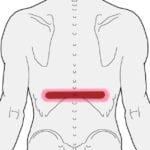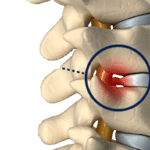Back pain comes in many forms that can be treated through a variety of different solutions. In most cases, back pain tends to be temporary and subside over the course of a few days or weeks, depending on how well it is being treated through other remedies.
In some cases, however, surgery may be necessary to relieve patients from chronic back pain that goes deeper than sore muscles or joints. It may also be required if the patient has suffered an accident or sudden injury that has rendered parts of their back immobile or difficult to move. Conditions like herniated or ruptured discs could be leaking the inner fluid content of spinal vertebrae, creating another source of nerve pressure and persistent pain that proves difficult to get rid of completely.
Surgery is often considered a last-resort option for resolving back pain and should only be recommended by a physician after other options have been considered. Several exams and imaging tests will likely be administered before spinal surgery is recommended for back pain relief.
Types of Surgery
There several types of surgery used to treat back pain. Most of them focus on relieving pressure on the spinal nerves caused by herniated discs or similar conditions. Others may attempt to realign spinal vertebrae or remove bone growth to prevent muscles and nerves from becoming injured or causing additional pain.
Some of the common surgeries used to treat chronic back and neck pain are:
- Foraminotomy: This operation is used to relieve pressure on the nerves caused by the intervertebral foramen, or the portion of the vertebra where the nerve root exits the spinal canal. It can be done through traditional open back methods or an endoscopic procedure.
- Laminectomy: This is performed when removing the lamina, a plate along the vertebra that covers the spinal canal. The procedure aims to widen the spinal canal to allow more room for the nerves to pass. It is ideal for patients who have been diagnosed with spinal stenosis or a herniated disc in the lower back or neck.
- Laminotomy:A laminotomy is a milder version of a laminectomy where only a portion of the lamina is removed. While it treats the same conditions as a laminectomy, a laminotomy is less invasive and comes with a faster recovery time.
- Spinal fusion:Also known as spondylodesis, a spinal fusion is employed for treating broken spinal vertebrae or increasing the strength of the spine. This procedure can help get rid of chronic lower back pain by fusing two or more vertebrae together. It is typically used for treating herniated discs, spondylolisthesis, spinal weakness or instability, or chronic lower back pain.
- Endoscopic discectomy: Also known as percutaneous laser discoplasty, this procedure aims to remove herniated/ruptured discs through a minimally invasive procedure that takes out the bulging material and eliminates the pain nerves with a laser. It is recommended for those diagnosed with bulging disc, herniated discs, or radiculopathy.
- Facet thermal ablation:In this procedure, a laser is used to eliminate the cartilage surrounding the joint to remove pressure off the nerves and relieve pain. It is commonly used to treat facet disease, facet joint syndrome, facet arthritis, and degenerative facet joints.
While spinal surgery is often considered a last resort in relieving back pain, it may be the only option in certain cases. In particular, chronic back pain or pain that progressively worsens despite other treatments may need surgical treatment to relieve the pain for good.
In any case, meeting with your physician should be the first step in resolving your back pain, whether it’s through surgery or other treatment plans. In most situations, alternative methods may be suggested before undergoing surgery. Nevertheless, only a qualified medical practitioner can determine if spine surgery is the right way to go for your back pain.



























